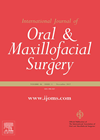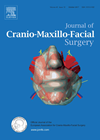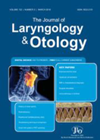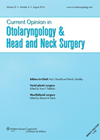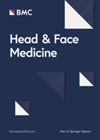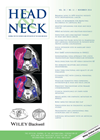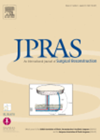
Journal Reviews
When to treat a fractured mandible?
This is a prospective study from Brisbane of 215 patients with a total of 359 fractures of the mandible. Nine outcome variables were analysed with a further 19 included to adjust for potential confounding. Treatment delay was found not to...
Delirium post-op
This is a retrospective study from Japan analysing 102 patients who underwent oral cancer resection and free flap reconstruction. Postoperative delirium occurred in a third of these patients. An increased risk was identified in those with high preoperative albumin, postoperative...
Modified subciliary approach to the orbital floor
Fractures involving the lateral midface and orbital floor are routinely treated by maxillofacial surgeons. The surgical management requires access to the facial skeleton to reposition and free the soft tissues. There are three main approaches to the orbital floor: infraorbital;...
Is a chest x-ray necessary in making urgent referrals for suspected head and neck cancer?
The article presents an audit on urgent referrals for suspected head and neck cancer in 2144 patients. Only 8.6% of cases proved positive for head and neck cancer. The Scottish Referral Guidelines were adhered only in 55.1% of cases. Interestingly,...
Current management of facial fractures in the preadolescent
This article reviews the trends in management of preadolescent facial fractures – a challenging population due to the need to consider growth, dynamic changes in dentition, and evolving fracture patterns. In summary, conservative management is preferred in all fractures in...
Facial Landmark localisation by curvature maps and profile analysis
The detection of three dimensional (3D) landmarks by scanning surfaces is a well established method in medical science. Anatomical landmarks are visually or palpably detectable and act as reference points for clinical measurements. When measuring these landmarks with a sliding...
The stigma of HPV in oral cancer
The increase of oropharyngeal carcinoma (OPC) in the developed world seems to be largely caused by infection with the human papillomavirus (HPV). HPV is a group of 150 DNA viruses that are common and most people will be infected at...
Proliferative Verrucous Leukoplakia; which one is this one?
Oral leukoplakia has the potential for malignant change and it may frequently require histological analysis and a period of regular clinical observation. The majority of oral leukoplakia remains constant but there is a subset that progress to carcinoma. The authors...
Use of angular vessels in head and neck free-tissue transfer – a comprehensive preclinical evaluation
Free tissue transfer (FTT) has transformed the capabilities in head and neck reconstruction. Rotational and pedicled flaps are limited by the pedicle length, the type of tissue required and the size of the defect. FTT helps lessen the impact of...
Head and neck myxofibrosarcoma: a case report and review of the literature
Myxofibrosarcoma is the most common soft tissue sarcoma that occurs in late adult life, peaking in the seventh decade, and it is mainly encountered in the lower extremities. Cases within the head and neck region are extremely rare and to...
Postauricular advancement flap for partial helix defect repair
Ear defects can be the result of trauma, burns or ablative surgery. The three dimensional structure of the pinna presents a difficult reconstructive challenge as successful ear reconstruction requires both similar tissue cover and a supporting framework. Partial ear reconstruction...
Multiple free flaps for head and neck cancer
Most patients with advanced head and neck cancers now undergo microvascular free flap reconstruction. This is mainly as flaps facilitate complete tumour and margin removal by providing reliable wound coverage and better restoration of form and function. However despite this,...

